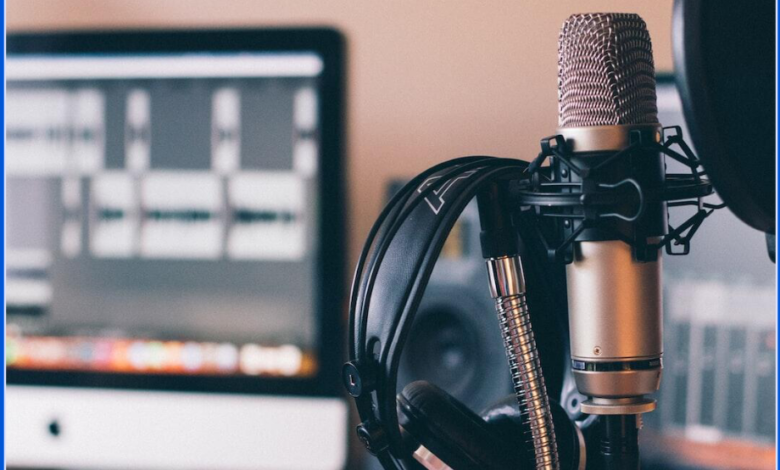The Guide to Production Work in Podcasting: From Concept to Launch

Podcasting has grown into a powerful medium for storytelling, education, and entertainment.
With low barriers to entry, more people are starting their own shows, but the process of creating a podcast involves more than just talking into a microphone. Production work in podcasting covers everything from initial podcast planning to launching your episodes, ensuring a smooth and engaging experience for your listeners.
This guide will take you step by step through the podcast production process, from concept to launch.
Step 1: Concept Development – Laying the Groundwork for Your Podcast
Before diving into recording, you need a clear concept for your podcast. Your concept defines what your podcast will be about, who your target audience is, and how you will deliver your content.
Define Your Podcast’s Purpose and Audience
The first step in production work is identifying the purpose of your podcast. Are you sharing educational content, offering entertainment, or diving into storytelling? Knowing your “why” will help you stay focused and make decisions throughout the production process.
Next, define your target audience. Understanding who you’re speaking to will influence your content style, tone, and format. Are your listeners professionals, students, or casual listeners? This helps determine the depth of content you’ll provide and how you present it.
Research Your Niche
Podcasting is a crowded space, so finding your unique niche is crucial. Research similar podcasts to see what’s already out there and how you can differentiate yourself. Look for gaps in the content they offer, or consider how you can bring a fresh perspective to the topic.
Plan Your Podcast Structure
How will your episodes be structured? Will you have interviews, monologues, or group discussions? Will each episode be stand-alone, or will they build on each other as a series? Deciding on your format and episode length during the concept phase ensures consistency and helps keep your audience engaged.
Step 2: Pre-Production – Getting Ready to Record
Once your concept is solid, the next phase of production work involves preparing everything before you hit record. This is known as pre-production.
Script or Outline Your Episodes
Even if you plan to have a conversational tone, creating a script or outline is essential for staying on track. It ensures you cover all your key points without rambling, which can cause listeners to lose interest. If you’re doing an interview, prepare questions in advance and consider the flow of the conversation.
Choose Your Equipment
To create a professional-sounding podcast, investing in the right equipment is important. At the very least, you’ll need:
- A good quality microphone
- Headphones
- Recording software
Make sure to test your equipment before you start recording to avoid any technical issues that could interrupt your production flow.
Select a Quiet Recording Space
Choose a recording space with minimal background noise. This doesn’t have to be a professional studio – many podcasters create DIY studios in closets or small rooms with soundproofing materials like blankets or foam panels.
Step 3: Recording – Capturing High-Quality Audio
Once you’ve set up your space and equipment, it’s time to start recording your podcast. This phase of production work focuses on getting the best possible audio quality.
Test Your Setup
Before you begin recording, do a test run on your equipment setup. Record a few seconds of audio and listen back to ensure the levels are right, there’s no distortion, and everything sounds clear. Adjust the microphone position, volume levels, and any settings on your recording software as needed.
Record in Segments
It’s often easier to record your podcast in smaller segments rather than all at once. This allows for easier editing and reduces the pressure of having to nail the entire episode in one go. Take breaks between segments to ensure you’re staying focused and energized.
Be Mindful of Pacing and Tone
When recording, pay attention to your pacing and tone. Speak clearly and at a natural pace. Remember, it’s easy to slow down or speed up in post-production, but getting it right from the start will save time later. Make sure to keep your energy up to engage listeners.
Step 4: Post-Production – Podcast Editing and Enhancing Your Audio
After recording, the bulk of production work shifts to post-production. This is where you’ll edit your podcast and make it sound polished and professional.
Podcast Editing Basics
Editing is crucial to making your podcast sound smooth and well-produced. Basic podcast editing includes:
- Removing mistakes
- Adjusting audio levels
- Adding intro/outro music
If you’re not comfortable editing yourself, you can hire a podcast editor to handle this part of production work. However, many beginners start by learning the basics of podcast editing software, which can be more cost-effective in the long run.
Adding Sound Effects and Enhancements
To further improve your podcast, you can add sound effects, background music, or voice enhancements. For example, background music during transitions can help maintain the flow of the episode. Be careful not to overdo it, as too many effects can distract from your main content.
Step 5: Launching Your Podcast – Releasing It to the World
Once your episodes are edited and ready, it’s time to launch your podcast. This phase of production work involves getting your podcast distributed to listeners.
Choose a Hosting Platform
To release your podcast, you’ll need to upload it to a hosting platform. These platforms store your episodes and distribute them to podcast directories like Apple Podcasts, Spotify, and Google Podcasts.
Submit to Podcast Directories
After uploading your podcast to a hosting platform, you can submit it to podcast directories. This allows listeners to find and subscribe to your show. Each directory has its own submission process, but most are straightforward. Once you’re listed in these directories, your episodes will automatically appear when new ones are released.
Promote Your Podcast
Don’t forget to promote your podcast! Share it on social media, your website, and through email newsletters. You can also reach out to other podcasters in your niche to collaborate and cross-promote each other’s shows.
Mastering Production Work for Podcast Success
Production work is the backbone of every successful podcast, and mastering it can be the difference between a show that stands out and one that fades into the background.
Remember, production work doesn’t end at the launch – continuously improving your process will help your podcast grow and evolve over time. Now, it’s time to get started and share your voice with the world.
Don’t let the fun stop here-our blog’s got more than just a good read. Dive in, we promise you


